We get many sensational news stories, saying a giant asteroid will hit Earth, or will nearly miss us. Several so far this year. Many of us worry about these things. So what is the truth behind them?
Actually astronomers have this well in hand for the largest asteroids. They have found 90% of the largest asteroids likely to hit Earth. This is mainly due to Pan-STARRS, which takes a 1.4 gigapixel image of a three degrees span of the night sky several times a minute. It continues to find a new large asteroid about once a month, and will find most of the remaining 10% by the 2020s.
The focus has started to turn to smaller asteroids, ones large enough to destroy a city. These are harder to spot, especially if they approach Earth from the direction of the sun. Our asteroid search telescopes on the ground can't operate in daylight. We hope to find 99% of the asteroids larger than 300 meters in the near future. Below that, however, the B612 foundation's Sentinel space telescope or similar may be needed to complete the survey.
Sentinel can get down to 20 meters diameter, and surveys the hard to spot asteroids between us and the Sun. They hope to launch it in 2018-9, if they can raise the funding. But progress is slow, and the main problem is funding. They have only raised around 5% of their annual funding goal of 30 - 40 million dollars. Without its help, the search for the smaller asteroids may take several decades.
The total cost is $450 million. Low enough so that an interested multibillionaire could fund the whole thing. And it is far less than sums that governments sign off for defense projects. E.g. the UK nuclear weapons carrying Trident submarines will cost our government $200 billion. For that much, you could have 200 of these Sentinel space telescopes.
They predict that Sentinel could find most of the smaller asteroids within six and a half years of the launch.
We also know how to deflect asteroids, if it is needed, especially if they are discovered well in advance. This is one of the few natural disasters we can actually prevent. With enough warning, the tiniest change in the speed, sometimes by as little as a millionth of a meter per second, can prevent an asteroid from hitting Earth decades later.
Many people must worry about this, as we get asked questions over and over on Quora, in the Asteroid Scares topic.
Some of the questions I answer here are:
- What is the truth behind these stories?
- How likely is it that we will be hit by a huge asteroid?
- How do we detect them?
- Why do we get stories about asteroids with a chance of hitting Earth, only to find soon after that they will miss?
- Can we destroy them or deflect them before they hit?
- What is the largest size of asteroid that could hit Earth?
- Could an asteroid hit us by surprise, with just a few weeks notice or a few months notice?
Includes material from my Science20 blog and several Quora answers listed on this page, and at the end of this page
(You can get this article as a kindle ebook)
CURRENT IMPACT RISKS
It is easy to keep up to date with the latest news by visiting this page:
This is the first place to go if you see one of those stories. It is automatically updated with all the new observations. Look to see if any of the entries in the table are orange or red. As of writing (September 2015), this has never yet happened.
| Small Objects | Torino Scale Colors | ||||
| Estimated diameter 50 meters or less. | 0 | 1 | 2,3,4 | 5,6,7 | 8,9,10 |
DETAILS OF HOW THIS WORKS
If any of them go red, a collision is certain, but how much of a threat depends on the number.
| 8,9,10 |
If the number is 8, it is localized on the land, large enough to form a small crater, or if it falls in the sea, it could cause a tsunami. Sooner or later we are bound to see a level 8 red alert, as these are expected to happen about every fifty years.
Often these are not even noticed, because the impacts are in remote parts of the world. Much of the world is still desert or sparsely inhabited. But with our population growing, there's more and more of a chance that one of these impacts will come close to a populated area. If one of these hit a city, it would be devastating.
It's a bit like being able to predict a normal terrestrial hurricane, volcanic eruption, earthquake or tsunami - with the extra twist that we can actually predict it decades in advance with enough data. And, with our space technology, we may be able to deflect the asteroid and prevent it altogether.
If the entry is red, and the number is 9 or a 10, then it's a much more serious threat, either regional, threatening an entire country, or global. These are rare, and the chances are that we probably won't see one of these in this century.
| 5,6,7 |
If the number is orange, then there is a significant possibility of a major impact, but it is not yet confirmed. With again the severity depending on the number.
| 2,3,4 |
If any entry is yellow, then it merits attention by astronomers, but there is at least a 99% chance that it will miss (for levels 3 and 4) and it may be very unlikely to hit (for level 2). It may be of significance to the public if the potential impact is less than a decade away - but since it is so improbable, the chances are that it will soon be reassigned to level 0.
The Near-Earth Asteroid 2004 MN4 briefly reached level 4 in 2004, so it went right up to the highest level in the yellow section, setting a record. But it was soon reassigned first to level 1 and then by 2006, to level 0. See 99942 Apophis (on wikipedia) for the details (2004 MN4 was a provisional name, and it was renamed to 99942 Apophis).
This should be no great surprise as, after all, there was a 99% chance of it missing Earth even when the news first broke.
| Small Objects | Torino Scale Colors | ||||
| Estimated diameter 50 meters or less are highlighted in blue in the table. | 0 | 1 | |||
If (as is usual) all the entries are coloured blue (very small objects), white or green then there is no confirmed impact threat for the next 100 years. It's quite common for an asteroid to reach level 1, green briefly. This means that it will do a close flyby of Earth, with a collision extremely unlikely.
For more about all these levels, see Torino Scale.
HOW PROBABILITIES CHANGE AFTER DISCOVERY
If you follow the news stories about asteroids, you might wonder why the probabilities of hitting Earth keep changing.
It is a bit like a tricky shot in snooker. When the player lines up a shot - it is very hard, for anyone to be sure, right away, that it is going to work. As the ball starts to roll, you get a better and better idea of its direction and speed, and before it has traveled very far, an expert player may begin to have a decent idea of whether it is going to work.
It's much the same for asteroids. When the first few observations are made, it has hardly moved across the sky since its discovery, so as for the snooker player you just haven't seen it travel far enough to be sure where it is going.
Also they might not have a good estimate of how far away it is in the early stages. If you look at something in the sky with just one eye, you can't tell if it is right above you or far away. A detailed RC plane just tens of meters above you, could seem as large as a full scale aircraft.
This is a fun RC model. It's Mac Hodges flying his model B29 bomber aircraft, carrying a model X-1 to recreate on a small scale Chuck Yeager's flight which first broke the sound barrier on October 14th, 1947.
From close up, it's clear that it's a model. But you might, perhaps, mistake it for a full scale plane. if you saw it in a distance, against a featureless sky, and only for a short period of time.
When you first discover an asteroid, all you see is a single point of light. You have no idea how large it is or how bright it is. So, it is hard to estimate how far away it is exactly, until you get observations from other positions to fix its distance by parallax.
Then, just as a snooker trick shot may bounce off several cushions, asteroids normally do several flybys of Earth before they have a chance of hitting it. Apophis, for instance, had to go through a gravitational keyhole only 800 meters wide in 2029, in order to hit Earth on April 13, 2036. So, a high level of accuracy was needed before the impact could be ruled out.
That's typical of these events. Later on as you make more observations you find out that it is less likely to hit Earth. Then, for all the large ones so far, finally you find it has no chance at all of hitting us.
For another example, 2013 TV135 became headline news when it went up to level 1 in the Torino scale (green), briefly, with a 1 in 63,000 chance of hitting Earth. This is the level where a flyby is expected but an impact is extremely unlikely. Even so, this lead to headlines such as Massive asteroid that could hit earth in 2032 with force 50 times greater than biggest nuclear bomb.
However, to put it in perspective, it had a 99.998% chance of missing, even on the day the news broke. It was no surprise to astronomers when it was eventually found to miss Earth. In the end, they predicted a miss over three quarters of the distance to the sun (0.76 AU) !
Another large object, 2002 NT7, large enough to have potentially global effects, had a risk of 1 in a million of hitting Earth in February 2019. That was a 99.9999% chance it would miss. Again, no surprise to astronomers, it is now known for sure that it will miss. More about these misses here: Near-Earth object (Wikipedia)
SENSATIONAL REPORTING OF NEAR MISSES
The one that's been most in the news recently, for Sept 24th, is just another flyby, and not even especially remarkable.
It is easy to look up its Closest approach table. If you aren't used to astronomical units, 0.0625 AU may seem small, but one AU is the distance to the sun. So this means it is expected to miss us by 9.35 million kilometers - with a minimum likely distance is 8.33 million kilometers. The Moon is only 0.3844 million kilometers away.
So that's a big miss, by over 20 times the distance to the Moon. There's no need to be concerned about that one!
I'm not sure why they are reported in this way. It would be easy for the journalists to just look up the asteroid in the tables, and see that it is predicted to miss.
There are many near misses every month, for instance, right now there are 36 near misses predicted for October 2015.
There is nothing special at all about the September 24 meteorite, at 120 - 270 meters, and at 21.5 the distance of the Moon.
There's another for instance on 4th October, 2015 FS332, 580 meters to 1.3 km in diameter, which will pass within 18.6 lunar distances. It is far larger, more than twice the size, and comes a little closer. It's relative velocity also is higher at 21.15 instead of 19.5 kilometers per second. Yet there are no news stories about that one.
Here is today's table, truncated at the next big near miss, October 4th. I've removed all the really small asteroids of a few tens of meters across.
| UPCOMING CLOSE APPROACHES TO EARTH | ||||||||||||||||||||||||||||||||||||||||||||||||||||||||||||||||||||||||||||||||||||
1 LD = Lunar Distance = ~384,000 kilometers
|
As you can see, the Sept 24th asteroid flyby, 2012 TT5 is not remarkable in any way.
The one on 4th October, 2015 FS332, 580 meters to 1.3 km in diameter, passes within 18.6 lunar distances. It is far larger, more than twice the size, and comes a little closer. It's relative velocity also is higher at 21.15 instead of 19.5 kilometers per second. Yet there are no prophecies or news stories about that one.
You can look it up for yourself, here: NEO Close Approach Tables - it is updated every day, so if you visit it on some other day you will see the table for the date of your visit.
For more about the September 24 "prediction" from an astronomical perspective, see The Truth About the “September 2015 Asteroid Impact” by Colin Johnston, Science Education Director at Amargh Planetarium, Ireland.
For another example, of a near miss - in January a larger asteroid about 500 meters across passed far closer than this to the Earth, at a distance of 1.2 million kilometers, or a little over three times the distance to the Moon. So more than one and a half times larger, and a seventh of the distance from Earth. But this didn't lead to any Armageddon predictions at all as far as I know.
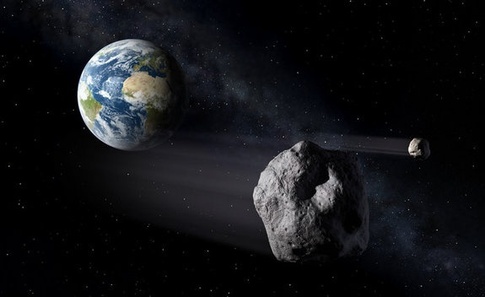
Mountain-Size Asteroid to Fly by Earth Monday: How NASA Will Watch - artist's impression.
Then, we got the one on May 15th, which, for some baffling reason, hit the headlines again in the tabloid newspapers, with headlines like: "Asteroid a MILE wide to hurtle past Earth in 48 HOURS - as experts warn of MASS EXTINCTION" - A COLOSSAL asteroid hurtling through space is feared to be one of the biggest EVER to threaten a collision with Earth."
This is how NASA reported it:
"An asteroid, designated 1999 FN53, will safely pass more than 26 times the distance of Earth to the moon on May 14. To put it another way, at its closest point, the asteroid will get no closer than 6.3 million miles away (10 million kilometers). It will not get closer than that for well over 100 years. And even then, (119 years from now) it will be so far away it will not affect our planet in any way, shape or form. 1999 FN53 is approximately 3,000 feet (1 kilometer) across."
Yes, it was quite large as asteroids go, but not colossal. It would be a bad day if an asteroid like that hit Earth, for sure, devastate an entire country, and have some global effects. But it didn't come particularly close, and is one of numerous asteroids that fly past Earth every month.
Asteroids can't suddenly swerve out of their orbits, so it makes no difference if it misses us by say 5 times the distance of the Moon or 20 times, or even passes closer to Earth than the Moon - it is still a miss. It does remind us of the need to track these asteroids. But it has no significance for that particular asteroid.
If it misses, it misses and that's all there is to it. Getting scared by these misses is a bit like walking along the pavement and panicking every time a car or bus on the road misses you by a couple of meters.
Do pedestrians get scared because a bus is about to miss them by a couple of meters?
A bus can go out of control, though it is exceedingly rare. Asteroids can't swerve into a new orbit and hit the Earth.
Like pedestrians on a busy street, Earth gets close flybys by thousands of different asteroids, but all of the ones found so far are in orbits that won't hit Earth in the next century, and most of them, probably, not for millions of years.
The picture, by the way, is of the first hydrogen fuel cell London bus, photo taken in 2011.
PREDICTION FOR THE OVER ONE KILOMETER DIAMETER 1950 DA
We do have one object that does have a small risk of hitting Earth with potentially devastating effect in the far future. This is the object 1950 DA. At a diameter of between 1.1 and 1.4 kilometers, it had a 1 in 300 chance of impacting Earth for a while after its discovery. After the orbit was refined, the risk went down.
However, it still has a 1 in 20,000 chance of hitting Earth. That's a tiny chance; it means that we are 99.995% certain it will miss us.
For impacts so far ahead into the future, it's a challenge to predict them. There are many uncertainties, even things like uncertainties about the exact masses of the planets can be significant over such long timescales.
One of the main uncertainties is the Yarkovsky effect - effect of the sunlight heating up a spinning asteroid - and re-radiated when the hot region is carried around to the night side of the asteroid. This small effect builds up over years and decades, for instance, in one example, the effect amounted to a hundred miles shift along the orbit in twelve years. Though that's small compared to the diameter of the Earth, 1950 DA has some close flybys before the 2880 event which magnify these uncertainties, more details here, 2002 paper where they calculate, the Yarkovsky effect could make a difference of nearly two months in the arrival time.
It's far too soon to try deflecting them right now. First - we have to refine their orbits, because we have that 99.995% likelihood that when we work it out more exactly we find it will miss anyway. You have to be very sure that it is going to hit before you deflect it, as otherwise you could deflect it in the wrong direction turning a miss into a hit.
So, that is best done a flyby or a couple of flybys before it hits. They are right not to focus on these asteroids at present. This asteroid is for our great great great (many times) grandchildren to deflect.
It's left out of the Sentry tables because they only list potential impacts for the next century. All the ones left out are probably best deflected by our grand children. Or they might simply be mined out of existence by then - as Near Earth Asteroids often have the highest commercial value because it is so easy to return the materials to Earth with low delta v. If we do get mining in space, these may be the ones that get mined first.
HOW MANY NEAR EARTH ASTEROIDS ARE THERE?
There are huge numbers of asteroids crisscrossing Earth's orbit. The latest estimate, as of writing, in 2015, is that there are about a thousand of them larger than 1 km across (990 +- 20), of which 90% have already been discovered. The largest of these are about 10 km in diameter.
Smaller asteroids are much more numerous, for instance there are around several thousand approximately 10 meters across. (techy paper here, in the journal Icarus).
This video gives an idea of how many of them there are crisscrossing Earth's orbit. When watching this video, do bear in mind that the asteroids are hugely magnified in size, to be visible at all. In fact, they are tiny, and they miss Earth by enormous distances of millions of miles, although they may seem to be almost hitting it in the video.
All the same there are many of them - and within 30 million years most of these objects will either hit Earth, hit Venus, or be ejected from the solar system (roughly equal probabilities for each of those outcomes). In one simulation, half of the NEAs (Near Earth Objects) were gone within 10 million years, and four fifths were gone within forty million years (see figure 2, page 198 here).
So, a third of these will hit Earth eventually, but it may be many millions of years before that happens. Because their orbit is not long term stable, this population is continually replenished, from the asteroid belt and from comets. The sources are a matter of discussion and debate in the academic literature.
You can watch them online also in an interactive display - lets you zoom in, view from different angles etc, at the website Astrorank. This visualization was developed by the google engineer Ian Webster,
You can also look up a list of the upcoming and recent close approaches in the Near Earth Asteroid tables.
This is an earlier image from 2013 which plots all the 1400 potentially hazardous asteroids discovered by then - all the asteroids passing within 7.5 million kilometers of Earth (about twenty times the distance to the Moon).
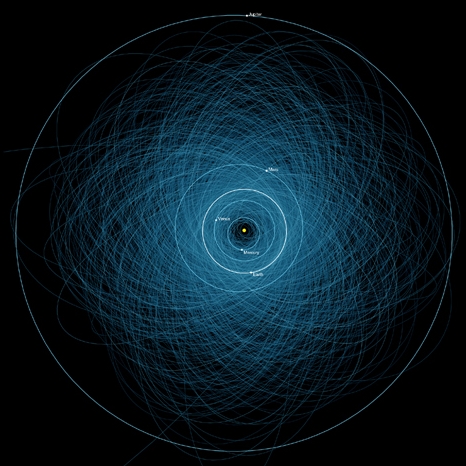
None of these have any significant chance of hitting Earth in the next hundred years.
SPECTACTULAR IMAGES USED IN NEWS STORIES
The journalists often use spectacular images like this to illustrate the articles:
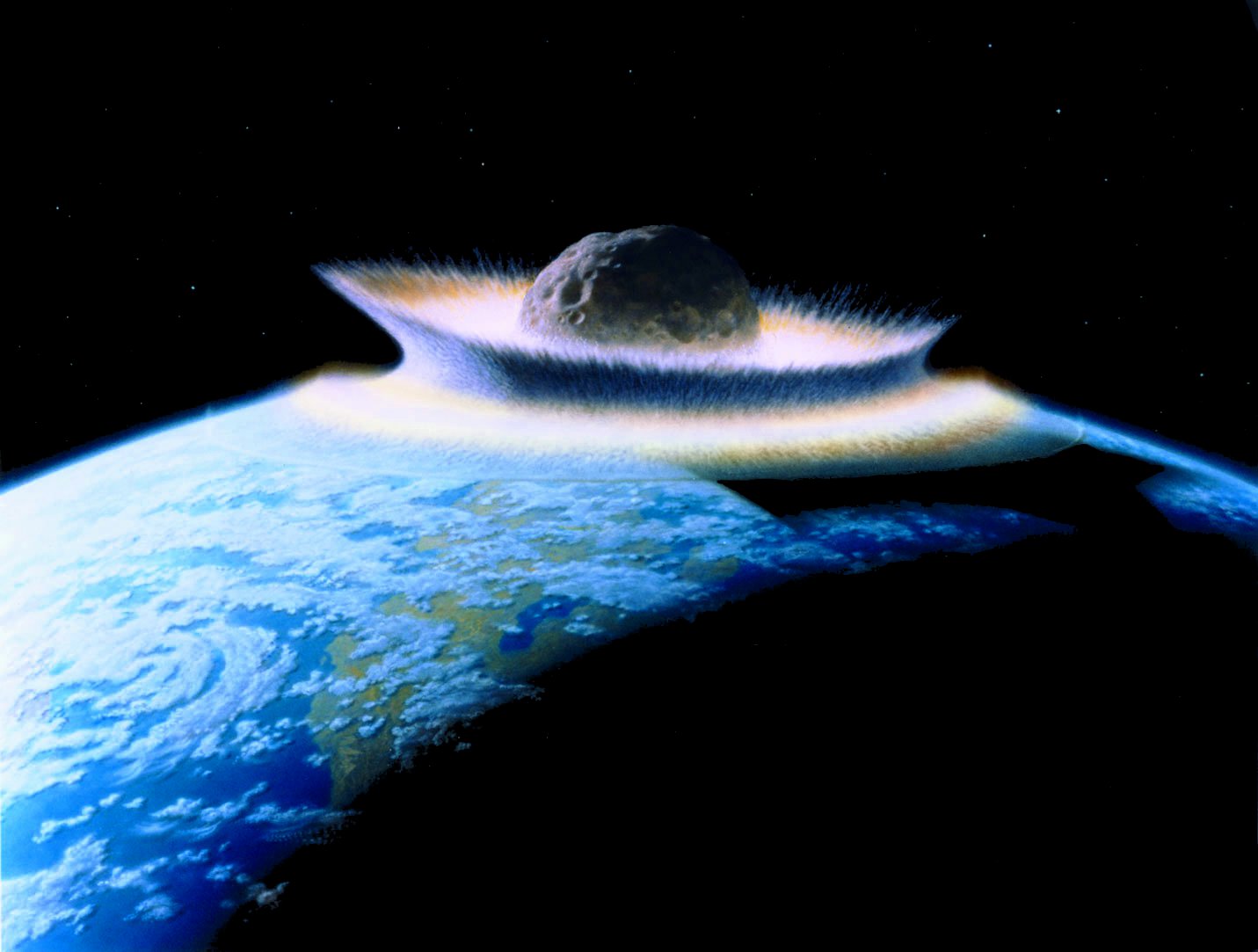
That's actually an artist's impression of a planetoid hitting the early Earth by Don Davis. The last impact on Earth this big was getting on for four billion years ago.
To put it in perspective, if you had an image of the Earth with 1600 pixels resolution for its diameter, which is a common resolution for an HD computer screen, then a ten kilometer diameter asteroid would be a little over 1 pixel in diameter.
This is about as large an asteroid as would hit Earth. So you can understand why they don't use realistic asteroid sizes in the images. You wouldn't be able to see the impactor at all!
This is a more accurate image, used in many news stories - where they show it glowing but don't show the impactor, and with a close up zoom in on the Earth.
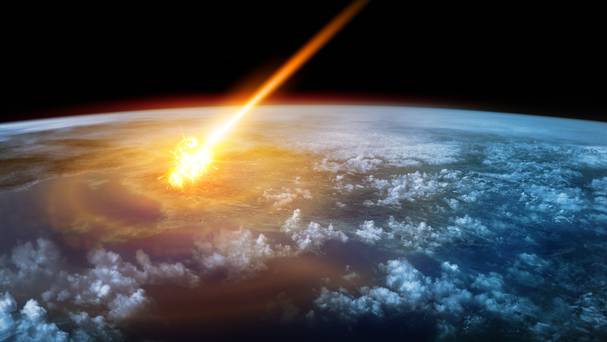
That's the image that was widely used for reporting 2013 TV135 the roughly 450 meters diameter asteroid that we now know will be over three quarters of the distance to the sun away from Earth on that date.
For a larger, 10 km asteroid, this is an accurate artist's impression, from NASA.

About 70 impactors this large or larger have hit Earth since 3.8 billion years ago.
Also check out the image by Don Davis, of Southwest Research Institute from Ancient Asteroids Kept Pelting Earth in a "Late-Late" Heavy Bombardment.
Nothing much would survive in the near neighbourhood of the strike, out to a range of order of hundreds of kilometers. But far away, many would survive the immediate impact.
RISK OF DINOSAUR EXTINCTION TYPE EVENTS
There is a risk of an object as big as ten kilometers in diameter, or a little more, hitting Earth. But how big a risk is it?
What would you say is the probability of this happening - a dinosaur era ending type impact, before 2100? And what is your best guess for when it is most likely to happen next in the future?
If you don't know the answer, you might like to pause reading for a moment and try a guess.
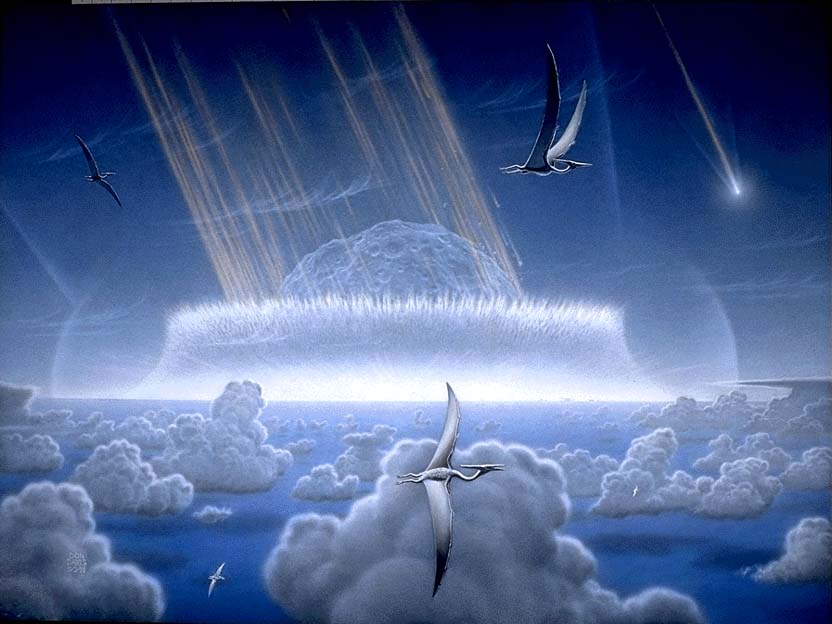
Artist's impression of the impact at the end of the Cretaceous period - credit Don Davis, painted for NASA
The dinosaur extinction event at the end of the Cretaceous period happened 66 million years ago.
When asked that question, most people hugely overestimate the chance of this happening again soon. Many, perhaps influenced by dramatic movies, will say there is a high chance of it happening before the end of this century.
Events like the dinosaur extinction impact occur roughly every hundred million years on average.
It's random, so could in principle happen in any century - but the chance of it happening in any given century is about one in a million.
So, if you ask for a best guess about when we are likely to be hit by an asteroid that large, the answer is, probably ten million years from now upwards. It is more likely to be several tens of millions of years before we get hit by an asteroid this large.
To put this into perspective, then since the dinosaur impact, there has been enough time for tiny animals looking like this
to evolve all the way to humans.
It may well be as long again before we have a similar massive extinction type asteroid impact on Earth again. And the dinosaurs didn't have any technology (as far as we know). We could easily survive that event - and what's more we could deflect it also, especially with a bit of warning (more on this later, in What kind of technology could we use to deflect an asteroid?).
This could happen in any century, as it is a random event. But the chance of it happening within the next century is one in a million, so you can be 99.9999% certain that it won't happen this century. Or indeed, you can probably add an extra 9, make it 99.99999% certain, since most of the 1 kilometer asteroids have already been located, and they all miss Earth in the near future.
Most likely it won't happen for many millions of years. And you'd expect to get many flybys first, because Earth is such a tiny target, hard to hit.
Indeed, if there were any astronomer dinosaurs at the time (unlikely) it would probably be obvious even to the naked eye. Assuming it did many close flybys first, every decade or two, as is the usual situation - then something that big, at the distance of the Moon would be as bright as a 10 meter diameter satellite in Low Earth Orbit. I would be easy to spot with the naked eye as a faint moving star in the sky.
In any flybys as close as geostationary orbit, it would approach the brightness of the ISS - the brightest object in the sky after the sun and moon.
CAN YOU GUESS A SIZE OF ASTEROID FOR OUR FIRST SUCCESSFUL PREDICTION?
Since there are far more of the smaller impacts, it seems reasonable to expect the first successful prediction to be similar in size to the recent Russian meteorite, or a bit larger.
So again, maybe you'd like to guess, what was the size of the first successfully predicted asteroid impact? There has been one actually.
Impact craters as large as this are likely to be created every 10 to 100 years
This crater is a rather tiny 45 meters across, and may have been created by an incoming iron meteoroid only 1.3 meters in diameter some time in the last few thousand years.
This is one of the few very small impact craters known on the Earth. It was first discovered on google maps :). To find out more: Pristine Impact Crater Discovered in Egypt Desert.
It's a challenge to track things as small as that. But as we get to smaller and smaller impactors, then eventually we are bound to predict even tiny impacts. And we can spot some of the small ones already when they do very close flybys of Earth or soon before impact.
So just by probability, the most likely first confirmed predicted impact would be a small impactor just because they are so common.
And it's likely to be in an uninhabited area, of desert, mountains, tundra etc, because most of the Earth's surface is uninhabited.
FIRST SUCCESSFUL IMPACT PREDICTION
As it happens, we have managed to predict one impact already. And as you'd expect, it was a small impact, into an uninhabited region (in this case the Sudan desert). It's worth going into this in a bit of detail, as it gives a good idea of how things would play out if we did have short notice of a larger impact.
This is 2008 TC3 which was discovered on Oct. 6, 2008 at 6:39 by Richard Kowalski in the Mt. Lemmon Survey
Here are some photos taken of it by Eric Allen, the asteroid is the dashed faint line:

Because it was so close, and many observations were taken from different places on the Earth, then through parallax, the distance was known precisely, and they soon had an accurate predicted path for the impact.
80 tonnes 4.1 meters in diameter, hit in the Sudan desert and about 600 meteorite fragments were recovered. It was detected only 19 hours before impact, but was the first ever successful prediction of a meteorite impact.
When it hit the Earth's atmosphere, a photo was taken of the fireball from space by the weather satellite Meteostat-8.
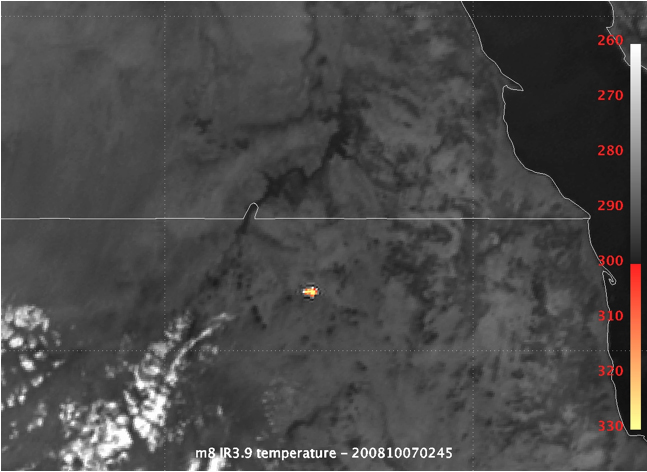
They informed aircraft of the expected impact, and the crew of a KLM jetliner, on the route from Johannesburg to Amsterdam, spotted the fireball as a flash on the horizon, from nearly 1400 km away. It was also spotted on spy satellites, with the US government saying it detonated at an altitude of about 37 km with energy radiated equivalent to 0.1 kilotons of TNT.
(Details from NASA and from Emily Lakdawalla's blog post on Planetary.org).
This meteorite was used as a way to test the process of tracking asteroids on an impact trajectory to Earth, and many observations were made. Wikipedia (which is good on this topic area) summarizes it like this:
"It was notable as the first such body to be observed and tracked prior to reaching Earth. The process of detecting and tracking a near-Earth object, an effort sometimes referred to as Spaceguard, was put to the test.
"In total, 586 astrometric and almost as many photometric observations were performed by 27 amateur and professional observers in less than 19 hours and reported to the Minor Planet Center, which issued 25 Minor Planet Electronic Circulars with new orbit solutions in eleven hours as observations poured in. On October 7, 01:49 UTC, the asteroid entered the shadow of the Earth, which made further observations impossible."
(When an asteroid passes through the Earth's shadow in a close flyby, it is no longer lit up by the sun for a while, and can only be detected by radar).
So, this was a kind of "dress rehearsal" and gives a good idea of the process we'd follow if we found a big asteroid headed our way.
If the asteroid was larger, then we'd have several days notice - that is, unless it approached directly from the direction of the sun, as the Russian one did, when we would have very little notice.
COLLABORATION PROCESS FOR A BIG ASTEROID
If we did find a big asteroid that had some chance of hitting Earth - orange or red in the table, what would happen then?
Well first, amateurs and professionals would collaborate to make as many observations as possible to refine the orbit until we know exactly where it is headed and all we can find out about it. Modern telescopes owned by amateurs are very capable.
And while they don't have giant telescopes of tens of meters in diameter, they do have them up to a meter or so in diameter, and some a bit larger. And have the advantage that there are many amateurs to take observations, while the pros are few in number by comparison, and the telescopes they use even fewer, often with observation time hard to get.
Here is a telescope built by an amateur astronomer (truck driver) using a mirror from an old spy satellite he got hold of, that was nearly 2 meters in diameter (70 inches). He had to silver it himself. It is basically a giant "dobsonian" steered by hand I think.
At the time anyway, it says it was the largest amateur built telescope in the world.
see: Utah truck driver builds worlds largest amateur telescope
However there are a fair few over one meter. Here is a list of some other large amateur telescopes larger than 1 meter in diameter: Largest Amateur Telescopes. And you don't need a telescope as large as that for asteroid tracking.
Astronomy is one of the few areas of science where amateurs continue to make significant on going contributions through their own observations. There are so many events and objects to observe in the night sky, that the very few big telescopes can't possibly handle all the observations.
It would be absurd to track a newly discovered asteroid with say the Hubble space telescope and such like - to use its precious observing time to do something you can do with a one meter or smaller telescope on the ground. They would be sure to rely on the amateur community as well as pro astronomers world wide.
As for NASA somehow being able to predict a major impact that nobody else knows about, forget about it, it's an absurd idea :).
MORE ABOUT THE TELESCOPES USED TO DISCOVER AND TRACK NEOS - AND THE PEOPLE WHO OPERATE THEM
Hubble's field of view is measured in arc seconds usually and its largest field of view is 0.05 degrees or about a tenth of the diameter of the Moon. By comparison PAN-STARRS which is one of the main telescopes used for searching for NEOs has a field of view of 3 degrees, or six times the diameter of the Moon.
You can compare the field of view of various telescopes here: Pan-STARRS
This shows the field of view of Hubble, shown in yellow:
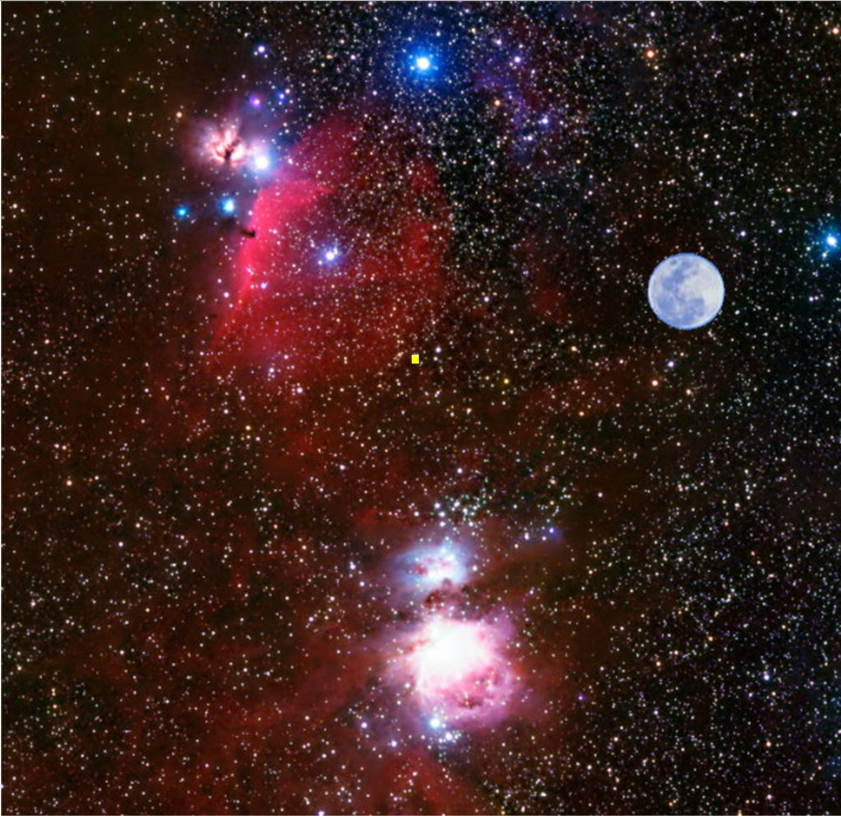
And this shows the field of view of Pan-STARRS
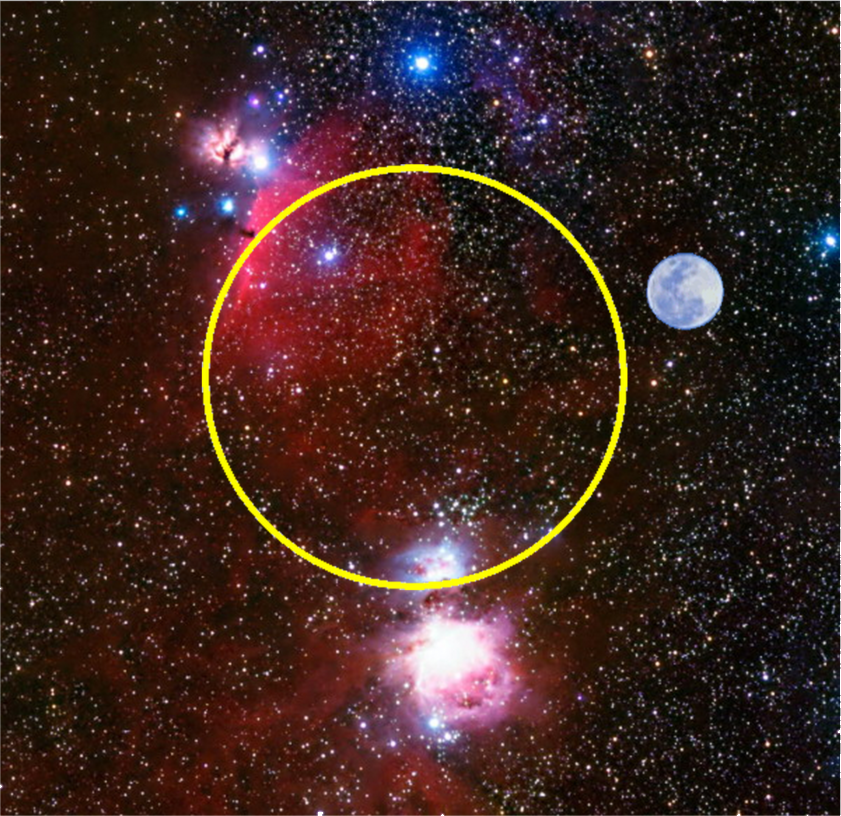
- full three degrees view, 60 times the diameter, and 3600 times the area of the field of view of Hubble and photographed with a super high resolution a 1.4 gigapixel digital camera. This is what you want for searching for asteroids - wide field of view, lots of photographs, sensitive to low light levels.
To see an example of one of its images in its full glory go to APOD: 2012 October 12 and then click through to see it full screen. And that's just a fraction of the detail of its original images, which it takes twice a minute, each in enough detail so that if printed at 300 dpi it would cover half a basketball court The 1.4-Gigapixel Camera Standing Between Us and Armageddon
I think you can see why they don't use Hubble to search for asteroids. You can compare the field of view of various telescopes here: Pan-STARRS
Pan-STARRS is operated by Hawaii University and a team of astronomers from 10 different institutes from four countries in the PS1 Science Consortium
And when you first find the asteroid, you have no idea what its long term trajectory is. You need several weeks of observations to get started, and then they continue to refine the orbits over years of observations.
You need all the help you can get for that task.
Big telescopes are sometimes used when asteroids do flybys of the Earth to get detailed images of them. But apart from that - it's lots of observations by many people including many amateur observations.
The main ones are listed here:
"Most of the NEO Discovery Surveys, including the Catalina Sky survey, Pan-STARRS and Spacewatch provide a substantial number of follow-up observations. Dr. David Tholen, at the University of Hawaii, is particularly efficient in providing the very faint follow-up observations that are often required to prevent small NEOs from being lost.
A substantial number of faint follow-up observations are also made at the Magdalena Ridge Observatory in New Mexico (Bill and Eileen Ryan). Explicit mention should also be made of the prolific number of follow-up observations provided by the Astronomical Research Institute (ARI) under the direction of Robert Holmes and the amateur group at the New Millennium Observatory in Northern Italy."
(from: Follow-up Observing Programs)
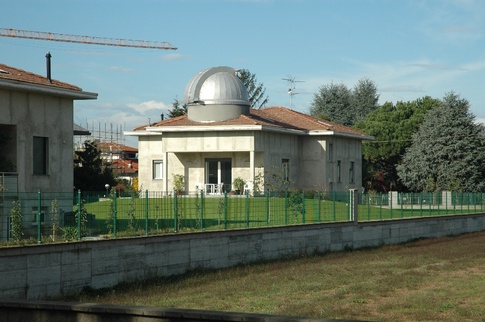
This shows the new millennium observatory in Italy - run by amateur astronomers - one of the many groups of observers who are involved in the Follow-up Observing Programs to refine the orbits of NEOs. This was built by Luca Cozzi, an engineer, brother of Dr. Elia Cozzi, Italian amateur astronomer and astrophysicist whose idea it was.
That's just to give an example - there are many groups of people and many telescopes world wide involved in this - and as you see - that's an ordinary not that big suburban house in Italy with a telescope built into its roof - the telescopes don't have to be huge monster tens of meters telescopes for this job.
Robert Holmes, amateur astronomer, one of the most prolific follow up observers for the NEO program.
For an idea of some of the other amateur groups involved in the NEO follow up observations see the Planetary Society grants, which they give regularly - to amateur groups who are doing especially good work in this area. See:
Leaders in Asteroid Tracking/Observing Awarded Through Global Grant Program

Bob Holmes again, this time with one of his telescopes - a wide field of view 0.76 m (30 in) telescope with a sensitive CCD camera purchased with a 2013 grant from the Planetary Society. Bob Holmes of the Astronomical Research Institute in Illinois, USASo, NASA are part of a big global program, and it is all interconnected.
- The sensitive telescopes with a wide field of view that find the asteroids originally (this used to involve amateurs also but is now largely automated) - run by many teams of astronomers from many different countries
- Those telescopes together with amateurs that track them after that to get the long baseline of measurements for the accuracy you need to assess probabilities properly.
- The big telescopes that occasionally take images of them for instance during close flybys of Earth.
- The computing / math geeks who are expert at working out the orbits and dynamics.
- And many others. They all have to work together, it's a big international effort.
Teams currently searching for asteroids include
- Spacewatch, University of Arizona - originally used for detection, now for follow up as other surveys got more sensitive
- Catalina Sky Survey (CSS), University of Arizona - focused on detecting Near Earth Asteroids. High detection rate, also excels at finding small objects close to Earth.
- Pan-STARRS, University of Hawaii - faintest limiting magnitude, of about 22 under good conditions. Also able to survey close to the sun. Wide field of view, gigantic 1.4 gigapixels digital camera.
- NEOWISE - 0.4 meter near infrared space telescope, on the Wide-field Infrared Survey Explorer spacecraft now being used to search for NEOs
Amateurs used to detect them but now, only rarely, by accident, as these professional telescopes do the job so much more quickly. Amateur astronomers mainly help with the very important follow up observations now.
PROGRESS REPORT FOR THE ASTEROID SEARCH UP TO 2015
They have pretty much finished the survey of the 1 km or larger objects currently in orbits similar to Earth. Total population of NEOs estimated at 981+-18 with diameter greater than one kilometer.
You can see here how the rate of discovery of the smaller NEOs is increasing rapidly. But the pace of discovery of the larger ones, over one kilometer in diameter, is gradually leveling off, suggesting we have discovered nearly all of them. The ultra sensitive Pan-STARRS is currently the only program continuing to find them - it found 9 so far this year, or an average of about one every month.
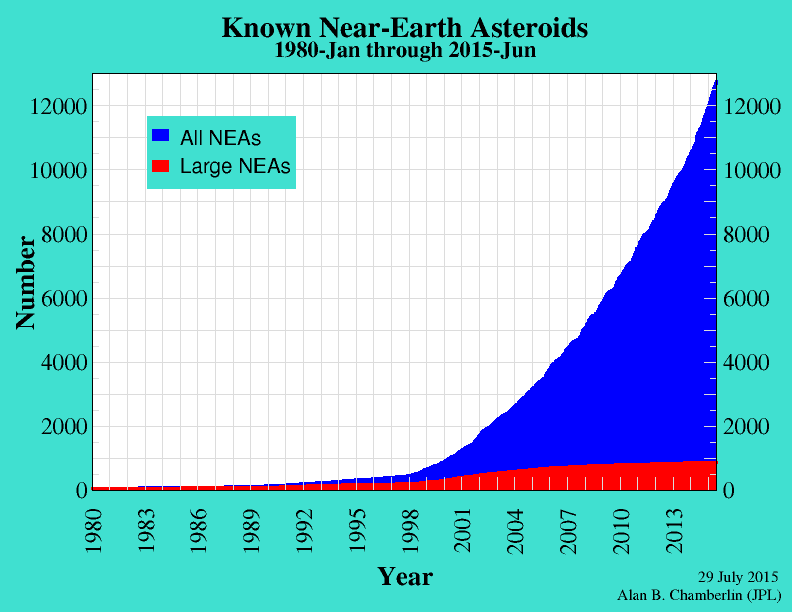
The total number of NEOs discovered has now reached over 13,000, with Pan-STARRS now finding 760 a year.
It's thought that we know all the objects of 10 kilometer diameter or larger right out to the outermost edge of the main asteroid belt.
Of the objects of one kilometer in diameter or larger, 876 are discovered already, so that's around 90% of the population, of which 154 are considered potentially hazardous. "Potentially Hazardous Asteroids" here just means that their orbit comes within 0.05 AU of Earth - that's within 20 times the distance to the Moon. They come close enough to Earth so that if their orbit gets perturbed, they could start to do close flybys, so potentially hit Earth.
It doesn't mean that those 154 objects are expected to hit Earth any time in the near future. They are only "potentially hazardous". Rather it means that any changes in their orbit need to be monitored particularly closely in case they become hazardous in the future.
Pan STARRS is capable of detecting objects of 300 meters in diameter throughout the asteroid belt, and 100 meters in diameter and upwards in the inner asteroid belt.
They hope to finish the survey of large (one kilometer or larger) objects in comet type orbits - the ones that go beyond Jupiter out to the outer solar system - in the next decade.
By then we'll either have found a potential impactor, or know that there is almost negligible chance of an asteroid larger than one kilometer in diameter hitting us in the near future.
The smaller asteroids less than one kilometer in diameter are more of a challenge, and are also more common, so more likely to hit us in the near future.
The Pan-STARRS project aims to find 99% of all the objects down to 300 meters. It is a full sky survey, can find objects from any inclination, e.g. a recent discovery is 2014 KM6, which has an inclination of 57.12 degrees.
The biggest risk may be from objects of less than 100 meters in diameter, as these currently are often discovered only days to weeks before the flyby or impact. A hit by one of these in the wrong place could devastate a city. And if they approach from the direction of the sun, as 50% do, then at present, we have no way of detecting them, which is why we couldn't spot the Russian Chelyabinsk impactor before it hit the atmosphere.
As you can see, below 300 meters, we see fewer asteroids, but it's thought that there are actually far more for these sizes. Below 100 meters, it is hard to spot them except during flybys of Earth (though Pan-STARRS can detect objects this size out to the inner asteroid belt) and 50% of the objects this size will approach from the direction of the sun, so hard to spot.
The best way to solve this, at present, is to use a space telescope positioned inside of Earth in a close to Venus orbit, like the B612 Foundation initiative. That could find them all, quite quickly.
For more about this and many other surveys going on: Surveys, Astrometric Follow-up&Population Statistics and the Near Earth Asteroid Statistics, which is where I got this information from.
MOST LIKELY TO SLIP THROUGH THE NET - SMALLER METEORITES
The ones that are difficult to spot at present are the smaller ones, especially if they come at us from the sun, like the Russian Chelyabinsk meteor, which briefly became brighter than the sun in the sky.
It would have been very damaging if it had hit in a city. And it was not predicted by anyone, even the day before the impact, because it came roughly from the direction of the sun. This is a blind spot for us at present.
Six meter diameter hole in Chebarkul Lake made by a fragment of the meteorite. Photo credit: Chebarkul town head Andrey Orlov. See: Meteorite hits Russian Urals: Fireball explosion wreaks havoc, up to 1,200 injured (PHOTOS, VIDEO)
The B612 foundation's space telescope would fix this blind spot, as it would be inside of the Earth's orbit and would soon detect just about all of the asteroids of this type large enough to be a threat.
The big fragments are the ones that matter most here.
A small fragment has a low terminal velocity (like a mouse falling out of a skyscraper). It may hit the atmosphere with relative velocities of kilometers per second - but by the time it hits the ground it is traveling at speeds more like tens or at most hundreds of miles an hour.
After flashing through much of the atmosphere as a fireball or meteorite in seconds, what is left over, if anything, takes three or four minutes to fall to the ground. Fireballs and Meteorite Falls. If you know its mass and cross sectional area, you can have a go at working out its approximate terminal velocity using the calculator here: Terminal velocity. And the very smallest fragments drift through the air and you can catch them as micrometeorites (see also, meteorites in your back yard).
This is the only car to be hit by an asteroid, the Peerskill asteroid. It was quite a large fragment, and as you see did a fair bit of damage, but not so much considering it hit the atmosphere at speeds of many kilometers per second. But by the time it hit the car, it was traveling at speeds of miles per hour.
If you are curious to find out if any rocks have made it all the way to the ground in your area (or anywhere else) check out this map
(click to go to the online version on CartooDB, where you can also zoom in on any area, then click on the dot to find out details of the meteorite fall and when it happened)This is a hotspot map - so it is red where there are many recordings of meteorite falls - it doesn't mean the falls there were large. These are mainly small stones of a few kilograms and it shows every meteorite fall recorded for the last 4,000 years. It is of course biased towards the places where meteorites are easy to find, and where there are historical records, and none recovered from the sea.
It was made originally by Simon Rogers from the Data Blog at the Guardian. Then de la Torre, co-creator of CartooDB made his own version following the same method - he shows how he made it, step by step, in this video.
ONE OF THE FEW NATURAL DISASTERS WE CAN PREVENT
An asteroid impact is one of the few natural events we can actually prevent with our technology (unlike volcanoes, earthquakes and tsunami). With a few years or decades of warning, we can deflect them rather easily. But to find them in good time, first we need to detect them.
The main focus here is on smaller asteroids, up to ones large enough to destroy a major city.
For instance, a 100 meter diameter asteroid, though not large enough even to cause what they call "regional damage", is large enough to flatten the whole of London or New York. If it hit London, it would generate strong winds that would blow out windows as far away as Scotland.
We are much more likely to spot one of those than the larger ones.
The chance of those also is tiny. After all, there haven't been any records of an asteroid that flattened a city throughout the whole of recorded history. But there are many more people in the world now, and also many more cities for them to hit. It can happen.
The famous Tunguska impact in the early twentieth century would have totally destroyed a city if it hadn't hit in such a remote place.
These are the ones we should be most concerned about, not the largely fictional world destroying ones you see in movies (even the dinosaurs' asteroid was not nearly as large as most of the movie asteroids - we've had nothing as large as those hit any of the planets or moons in the inner solar system since the end of the "late heavy bombardment" well over three billion years ago, more on this in the section What are the chances of getting hit by a Texas sized asteroid?).
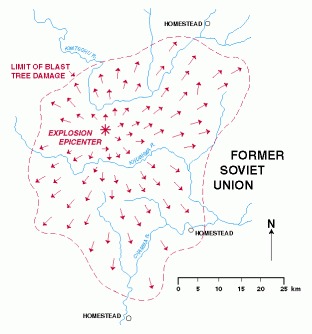
Luckily this one landed in a remote uninhabited area of Siberia and instead just flattened many square kilometers of forest, over a region of diameter about 30 km or so.
An asteroid this large will hit Earth only every few centuries. And most will hit the ocean or an uninhabited area. But you would want to know if one was headed our way. Given plenty of warning, we can stop it easily.
Then we can detect smaller ones eventually, down to the size of the asteroid that hit Russia last year. The way it works for those - that it's easiest to detect them during a flyby of Earth. But the Earth is a tiny target so an asteroid typically does many flybys of Earth before it hits it.
With each flyby we refine the orbit more and more exactly. And if we see that there is a chance of it hitting Earth - well we can deflect it, maybe a year or so before the next flyby.
A tiny deflection at that point, in some cases as small as a millionth of a meter per second change in velocity - could shift it enough so it misses Earth next time around, because these flybys are so sensitive to tiny shifts in position during its closest pass of Earth.
As we continue this search, eventually, we might spot one of the larger ones also, up to 10 km or so. If so, the chances are it is predicted to hit Earth several centuries, or a few thousand years into the future. I say that because they are so rare. There is only 1 in a million chance of a large impact before the end of the century. So if we spot one of those, there is at least a 99.9999% chance that it will hit us more than a century into the future, and it most likely will hit us several million years into the future.
There are many methods now known that could deflect asteroids, especially with such long lead times before the impact. Even sometimes just paint it white and that will do the trick. But first we need to detect them.
This is the launch of the asteroid day campaign last year, with Brian May talking about the effect of a 100 meter asteroid if it hit London.
And a video about the importance of asteroid day:
The Importance of Asteroid Tracking with Dr. George Gatewood
And many videos of famous astronauts and astronomers who have signed the petition on facebook here: asteroid day (facebook).
And Phil Platt's talk about the dinosaur's "Really bad day"
ASTEROID DETECTION WITH A SPACE TELESCOPE
So far our asteroid detection is done from Earth. For instance with Pan-STARRS, dedicated wide angle telescope - that's what you need, not a high magnification telescope like Hubble.
But if we can send space telescopes into independent orbit around the sun, especially if they are closer to the sun, then they will be able to spot faint close NEOs much more quickly, so that we can complete the search for them sooner.
This is the idea of the B612 foundation (named after the "Little Prince"'s planet) which has been working for some time on its Sentinel telescope idea

It would sit inside of Earth close to Venus's orbit giving it a good field of view of NEOs close to the sun. It looks away from the sun to avoid being blinded by it - and it can then see faint NEOs that are in between the Earth and the Sun which is the hardest place to spot them from our current Earth based surveys. It would help fix that blind spot for asteroids that come from the direction of the sun. It looks in infra red because the asteroids are far more obvious in the infrared.
Eventually it would spot just about everything out there that's in the vicinity of the Earth orbit.
Idea is that it would find nearly all potential impactors down to 40 meters diameter. And recently announced, that it should be able to spot them down to 20 meters diameter.
We get hit by 60 Chelyabinsk sized meteorites every century - though most of them fall over the sea, or remote areas so few of them are noticed. So Sentinel would be bound to find many of them.
Let's try a rough estimate of the chance of a 20 meter asteroid hitting an urban area. 3% of the land mass is urban, according to GRUMP, a total of 3,524,000 km2 or a sixth of that in some of the other estimates, 0.5% in a recent estimate. With the larger figure, that's around 0.7% of the Earth's surface (including oceans).
With 60 meteorites, then the chance of one of them hitting a city is 100-100*(99.3/100)^60 = 34.4%. With the lower figure, there is about a 7% chance. So at any rate, depending how you define urban area, there's a significant chance of a Chelyabinsk sized meteorite hitting an urban area in the next century.
So Sentinel will surely find many 20 meter diameter meteorites on a trajectory to hit Earth. Most will hit in the sea or deserts.
At this size, around 12,000 to 13,000 tons in case of the Chelyabinsk meteorite, they are easy to deflect, hit with a one ton spaceship, at a bit over a kilometer per second, less than a year before the impact and it will miss Earth. So, we could deflect them - or if they are due to hit, say, in the middle of the Pacific ocean, just watch to see what happens and use it to refine future asteroid impact predictions.
And - it will let us reach the target of 90% detection or better of the city destroying 100 meters or larger meteorites much more quickly, because of its ability to observe meteorites in between Venus and Earth in their orbits.
Anyone who is really keen to support them with their work can help them out with a donation on their website. They need our help - they have raised only 5% of the 40 million dollars a year they hoped to raise, so far. See recent Nature article: Private asteroid hunt lacks cash to spy threats in orbit.
NASA was never going to fund it, just provide support. But it has dropped this support now because of the funding gap. NASA drops partnership with private asteroid hunt. Sentinel is continuing as a private project.
NASA might possibly fund the less capable Near-Earth Object Camera which will be positioned at the L1 position between Earth and sun instead of an orbit close to Venus. This will help with asteroids of 140 meters diameter or larger. It is competing with other non asteroid related projects, so I wouldn't pin our hopes on it quite yet. And though certainly a major step forward, it won't find the more numerous, and still dangerous, 100 meter diameter or smaller asteroids.
You can also sign the Asteroid day petition to increase funding of asteroid detection by 100 times 100x Declaration
For all of you who panic about the news stories and movies about the really big asteroids - well - there's no conspiracy, nobody hiding anything, it's not possible that there could be. This must be one of the silliest conspiracy theories out there when look into it in detail.
But there is a real threat. Some day Earth will definitely be hit by these medium sized and small asteroids. Some time in the next hundred million years it will almost certainly be hit by a large one also (though not quite as large as in the movies). And this is your chance to do something to prevent these impacts.
HOW BIG WOULD A METEORITE HAVE TO BE IN ORDER TO BE A "PLANET KILLER"?
You are talking here about an asteroid of the order of several hundred or thousand kilometers in diameter. Vesta or Ceres perhaps? Or the Moon? You want an impact that boils the oceans away all the way down to the ocean depths, and makes the entire surface of the Earth molten down to a depth of many kilometers.
We have life deep in the oceans (where the creatures in hydrothermal vents can withstand high temperatures above boiling point already), and many kilometers underground. Even eleven kilometers below the ocean floor. That's deep: life found 11km below sea level in deepest known point on the surface of the Earth
So even impacts that bring the surface of the oceans to boiling point would be easily survivable by these lifeforms.
The Earth's oceans have a volume of 1,335,000,000 cu km see Volumes of the World's Oceans from ETOPO1. Volume of Ceres is 452,331,448 cu km. Ceres: Overview. So to boil the Earth's oceans you'd need to boil the equivalent of nearly three times the volume of Ceres. And that's not enough because you also have to melt the Earth's crust down to a depth of many kilometers.
The impact that brought an end to the dinosaur era wouldn't even kill all humans. After all, many mammals survived it (that's why we are here).
Without any technology, little creatures perhaps living in burrows were able to survive. Birds also survived it, perhaps by flying out to sea. Crocodiles survived it, and both river and sea turtles.
River turtle, Boremys basking on a Triceratops dinosaur skull, Credit: Brian T. Roach, Yale Peabody Museum
How Tough Turtles Survived Dino-Killing Meteor
So of course many humans would. E.g. people in Antarctica, or climbing snowy mountains with nothing to burn in a global firestorm. Or under the sea in a submarine. Out at sea in a boat, if far from the impact site.
And in any case we'd see it coming for at least months before - something that size, and could build fire shelters etc, build up stocks of food and so on.
(And within a few decades, perhaps even by late 2020s, we will have nearly all near Earth asteroids mapped, and then chance we are surprised goes way down - and if we see anything headed our way, we can get started on deflecting it decades before it hits Earth).
WHAT ARE THE CHANCES OF GETTING HIT BY A REALLY LARGE TEXAS SIZED ASTEROID AS IN THE MOVIE ARMAGEDON?
In the movie Armageddon, NASA discover an asteroid roughly the size of Texas heading for Earth, due to hit us in 18 days. So is such a scenario at all possible?
Discovery channel made a video of a simulation of a 500 kilometer diameter impactor hitting the Earth, smaller than Texas, which is 1400 km across.
It's a wonderfully realized video. And, yes, not many people would survive an impact like that - you would need to be in space. Even the sea boils away.
It is true that impacts this large did hit Earth in the early solar system - soon after the formation of the Moon. You can see the craters they formed on the Moon. But we no longer get asteroids that big.
They are talking about an impactor many times larger than the moons of Mars, which amateurs can see from Earth. We'd see it from way across the solar system, easy to spot way beyond the orbit of Jupiter.
It's about the size of Vesta, the second largest asteroid in the solar system, way beyond Mars. Vesta was first spotted in 1807. It is the only asteroid sometimes visible to the naked eye. Pallas, similar in size, in the asteroid belt beyond Mars, is easily visible in binoculars at closest approach.
It's also the same size as Enceladus, one of the moons of Saturn, which can be viewed by amateur astronomers in a moderately large telescope.
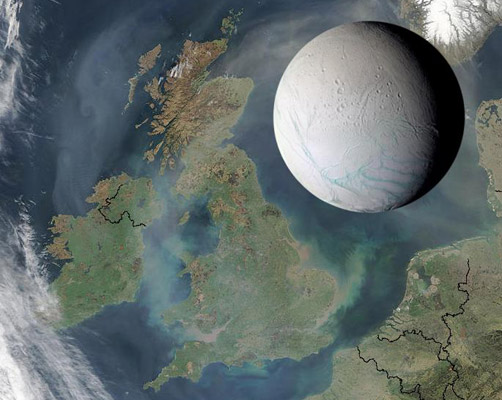
Enceladus hovering over the North Sea - this is smaller than the asteroid in Armageddon, and it can be spotted by keen amateur astronomers out as far away as Saturn. Image credit NASA / JPL. You might also like to check out Cirro Villa's image of Enceladus hovering over Southern England in Asteroids VS. Your Hometown: Fun but Frightening Graphics Compare Asteroid Sizes to Places on Earth
Voyagers 1 and 2 both took over three years to reach Saturn.
It's not credible that we would be surprised by an asteroid this big, with 18 days to do something about it, and nobody noticed what was going on.
Also, the explanation of how it got on course to hit the Earth in the movie is not credible either.
For more about this see Phil Platt's "Bad science" post about the film Armageddon where he talks about the many things they got wrong (warning, his post has plot spoilers for anyone who hasn't seen the film).
Now, perhaps we could get surprised by a very long period huge comet from the outer solar system. These could in principle even be as large as this, though very rare. There are plenty of objects this big and larger, in the Kuiper belt, beyond Pluto and from time to time some of them get perturbed into the inner solar system.
Even out to the inner Kuiper belt, we probably would have spotted it already though. We can spot trans neptunian objects down to a couple of hundred kilometers.
Here for instance is a photograph of (55636) 2002 TX300 as viewed with a 24" telescope (a largish amateur telescope)
Photograph taken by Kevin Heider, with a 24" telescope
It has a diameter around 300 km. It never gets closer to the sun than 38.1057 AU - it is one of the "cubewanos" - Kuiper belt objects with an orbit that is always outside of Neptune.
There are many of these discovered. Many smaller than this. For an up to date table of them, see List of Known Trans Neptunian Objects.
For the hardest to spot ones in that table, look for the ones with q > 30.331 AU (q = perihelion in that table or closest to the sun, Q = aphelion or furthest from the sun), Those never get closer to the sun than Neptune. Some nice graphs of them here. You can also find a list of them in wikipedia, not quite so comprehensive, here.
Many trans Neptunian asteroids however are in eccentric orbits, and they come into the inner solar system. So how long might it take them to get here?
Well, Voyagers 1 and 2 both took over twelve years to reach Neptune. New Horizons took nine years to reach Pluto. And the objects themselves typically have orbital periods of over a century, so a more normal time to get into the inner solar system, without the flybys used by Voyager would be more like 25 years (a quarter of an orbit of Neptune).
So, we might be surprised by an object "as big as Texas" with a lead time of a decade or two from discovery to it entering the inner solar system.
If they said 18 years instead of 18 days, it would be a bit more credible :).
However there is another reason why it's unlikely that we would be hit by one of these. The Kuiper belt objects come from random directions with random inclinations, and are very unlikely to lie in the same plane as the Earth's orbit or to hit Earth.
We can see that also from the meteorite crater record of the solar system. There are no huge craters in the inner solar system younger than 3 billion years, out to Mars.
The Moon, Mercury, and Mars all have huge craters from the late heavy bombardment between 3.8 and 3.5 billion years ago.
Craters on Mars
Impact from 3.8 billion years ago when large asteroid impacts were still common. 3D map of Mars - Hellas Basin on Mars
Craters on the Moon
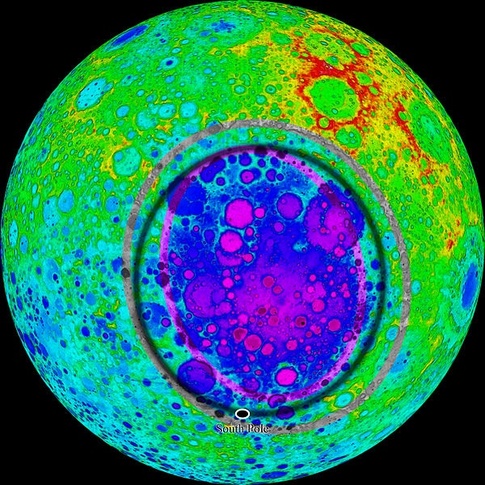
The Aitken basin at the lunar South pole. It's believed to be over 3.8 billion years but the exact date is hard to pin down. Impact of an asteroid perhaps 170 km in diameter.
Craters on Mercury
Craters on Earth
Earth surely had impacts this large back then as well, but the evidence is probably long erased by continental drift.
The largest crater on the Earth may be the Vredefort Impact Structure in South Africa - this was about 300 km in diameter, when formed. The Sudbury basin is nearly as large, and there are three others in the 100 - 300 km range. See Largest craters ordered by size. These are thought to be the result of impactors of up to 10 or 15 km in diameter.
For the largest I can find, see this Impact of 23-mile-wide asteroid boiled Earth's oceans 3.26 billion years ago (and another link, and scientific paper). When it says it boiled the oceans there - doesn't mean it boiled them dry, just surface layers, and it would come nowhere near making all life extinct. Humans could surely survive even that one if you are in a sub at the time, and after the impact, Earth would remain the most habitable place in the solar system. Anyway - that one is over three billion years ago, soon after the end of the so called "late heavy bombardment" - it is only late compared to the origins of the solar system, early of course from our perspective.
Even though the "late heavy bombardment" was over, there was a tail-end of not quite such huge impacts that continued, perhaps for another 700 million years. Ancient Asteroids Kept Pelting Earth in a "Late-Late" Heavy Bombardment, up to 2.5 billion years ago.
Craters on Venus
Venus is shrouded in a thick layer of clouds, so hard to observe. However, we now know its surface in some detail from the Magdellan spacecraft, which orbited the planet and observed it using radar.
It found a surface with almost no craters. It's easy to see why it has no small craters. Most asteroids up to about one kilometer in diameter or smaller would break up in its atmosphere in an airburst, just as most meteorites up to 30 meters diameter break up in our atmosphere, because its atmosphere is so much thicker than ours.
But they also didn't find many large craters and none at all of the really huge ones. It's the least cratered body discovered so far in the entire inner solar system.
This is probably because it's surface is relatively young. It has no signs of continental drift, and not much volcanism right now, compared to Earth (there are some signs that it has active volcanism, but not many). It doesn't seem to be releasing enough heat. And there are long channels, longest in the solar system, where molten lava must have run in the past.
The leading hypothesis is that the whole planet gets resurfaced every few hundred million years. Because it has no continental drift, so there is no way for it to lose excess heat gradually, and instead it just gets hotter and hotter, until, from time to time, the entire surface "flips", volcanoes erupt everywhere and cover it in molten lava which completely erases the crater record. Most recently 300 to 500 million years ago.
So, we can only say for up to half a billion years of history, but there have been no really huge impacts on Venus in that timescale.
It's largest crater, Mead crater, is 280 km in diameter
Meade crater - the largest crater on Venus, comparable in size to the larger craters on Earth.
Though we don't have direct evidence, it probably has the same history as all the other planets - large impacts only up to around the end of the Late Heavy Bombardment. It must have been hit by something big early on to explain its retrograde motion - most probably about the same time as the formation of the Moon. And surely like the Moon, Earth, Mars and Mercury it had many really big impacts in the early solar system. But all trace of them is now gone.
Explanation of the cratering record - why are there no huge impacts for three billion years?
So, why do we see no really large impact craters in the inner solar system since the late heavy bombardment, and the "late late" heavy bombardment?
First, the inner solar system is almost completely cleared out of "Texas sized objects". There are a few objects of a hundred kilometers diameter or more are all in stable orbits at least for hundreds of millions of years. Ceres, Pallas, Vesta and many smaller asteroids larger than 100 km in diameter, would be devastating if they hit Earth, but they are all in stable orbits in the asteroid belt, beyond Mars, with no chance of an impact, at least in the near future.
Mercury is another object that could hit Earth - it is in a stable orbit at present, but it happens to have a potential future resonance with Jupiter - the rate of precession of its perihelion (point where it is closest to the sun) is just a little faster than the rate of precession of Jupiter's perihelion. There is a 1% chance, in simulations, that it's orbit gets destabilized. In most of those cases it hits the sun or Venus but there is a tiny chance, 1 in several thousand, that it could hit Earth (for details see this article in scholarpedia written by Jacques Laskar, expert in this topic who did many of the simulations).
Mercury, diameter 4900 km, could hit Earth several hundred million years from now, though the chance is tiny, perhaps 99.95% or better chance that it doesn't have any affect on Earth at all. At any rate its current orbit is stable for hundreds of millions of years.
This image shows Mercury in a subtle false colour, using infra red information and was taken by Messenger spacecraft in January 2008.
Long term, also, the larger asteroids have chaotic orbits, and Vesta and Ceres have an estimated 0.2% chance per billion years of hitting each other (paper)
So anyway - that's of interest to astronomers, but in the near future for hundreds of millions of years, the largest "Texas sized" objects in the inner solar system, inside of Jupiter, are in stable orbits and can't hit Earth.
And anything from the outer solar system has to get past Jupiter, which tends to catch the really big ones or break them up.
More accurately - anything close to the plane of the solar system, if it is in a Jupiter crossing orbit, is likely to do a close flyby of Jupiter first, because Jupiter's gravitational influence is so large.
Jupiter's Hill radius - sphere of influence - is 53 million km and its distance from the sun is 778 million kilometers.
Earth's hill radius is about 1.5 million km (1,497,000) and its distance from the sun is about 150 million km (149,600,000 km) - ratio of the two is actually larger, but of course, Earth's gravitational influence is much less on anything that passes through its Hill sphere.
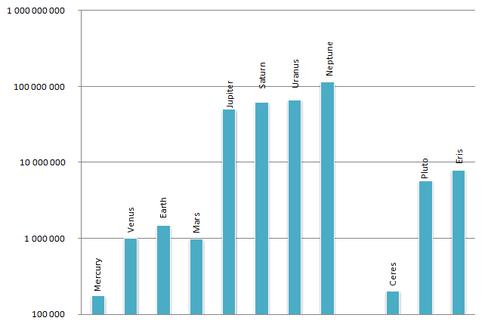
Hill sphere of the planets (log plot)
Also see:
Hill Sphere calculator
Also
Planetary Calculator framed home page
lets you find the Hill spheres of all the planets in one go.
So any object coming into the inner solar system, unless it gets into some resonance with Jupiter, is going to encounter Jupiter's hill sphere pretty soon.
So the explanation of the cratering record may be something like this: A large comet on its first flyby of the inner solar system is likely to miss Jupiter but will have almost no chance of hitting the tiny Earth.
Also, if it comes from the outer solar system, it is very unlikely to be in exactly the same plane as Earth and likely to be like Halley's comet.
As you see, Haley's comet, in this orbit, can never hit Earth because it's orbit only crosses the plane of the Earth's orbit when it is about as far away as Venus, far closer to the sun.
So, - if you had a comet that came into the inner solar system for the first time, not likely it is in the same orbital plane as Earth.
How tricky is it for a comet to hit exactly the same orbital plane as Earth?
More exactly, Earth's diameter / distance from sun = 12,742/149.6 million = 0.00008517379 - which is also approximately its angle in radians as seen from the sun.So to hit the Earth on a first flyby into the inner solar system, without first doing numerous flybys of Jupiter, Earth etc, it has to have the same inclination as the Earth, 1.57 degrees, to within 0.00488 degrees. If you look at the list of currently known Trans-neptunian objects, they have widely varying inclinations. Out of a total of 1971 objects (as of writing), only 25 have their inclinations listed as 1.5 degrees (most of those are cubewanos so never come inside Neptune's orbit).
Not only that though, Earth's diameter compared to the perimeter of its orbit is about 12,742/(2*pi*149.6 million). So, if it does happen to have exactly the same inclination, to two decimal places of precision, the chance of hitting Earth on it's first flyby of the inner solar system, before any flybys of Jupiter or the other planets, is still less than one chance in 74,000.
It needs to be deflected into the same plane first, which it could do with flybys of Jupiter (say), which changes its orbit.
Then many of them hit Jupiter, or hit the Sun, or grazes past it and melt away. Others are thrown out of the solar system. The ones that are left after all that are split into many smaller comets through close encounters of Jupiter or the Sun. These break it up through tidal interactions - the gravitational forces are different on the inner side, and outer side of the comet. As comets have low levels of gravity and are not tightly bound together, they break up easily.
We saw just this happen with Comet Shoemaker Levy. It got split into numerous smaller comets

Then it hit Jupiter, leaving these marks in its upper atmosphere, which gradually faded away.

At the time it was thought that this was a rare once in a century type impact. But then another impact was discovered in 2009

The impact scar here is approximately the size of the Pacific ocean, and the impact was perhaps 200 to 500 meters in diameter, but was not seen before the impact. It was discovered by an amateur astronomer, Anthony Wesley, who then discovered a much smaller impact in 2010 probably caused by an object just 8 - 13 meters across. And then two amateur astronomers in 2012 observed another impact. This time, by chance, a third amateur astronomer was taking a video of Jupiter at the time, and checking back through his video frames, found that he had recorded the event.
This is another example of the role of amateur astronomers in Astronomy. They can watch targets like this continuously, which the professional astronomers, who have to justify their time on large telescopes, simply can't do. Though Hubble of course, for instance, could get better images of Jupiter, there is no way one could justify pointing it at Jupiter 24/7. And amateur astronomers now have equipment that lets them take photos and videos like this. For more on this, see Impact: Amateurs observe Jupiter taking another for the team.
There must be many impacts we miss as well. For three to four months each year, Jupiter is behind the sun or too close to be observed easily, as seen from Earth. And scars of the larger impacts last two or three months. Based on this, then the best estimate at present (in a paper from 2010) is that Jupiter gets hit by an object between 0.5 and 1 kilometer in diameter every decade. This is five or ten times the previous estimates.
That's about two thousand more than the number that hit Earth.
It also gets hit, they estimate, by objects of size 300 - 400 meters every two years, and for objects of size 10 meters, it gets about 30 - 150 impacts a year.
So, the answer seems to be that, by the time a giant comet from the outer solar system has a decent a chance of hitting Earth, it has probably impacted Jupiter already, or the sun, or escaped the solar system. If it has managed to escape those fates, then by then, with many flybys of Jupiter, or of the sun, it has already broken up into smaller comets of around 10-15 km scale or smaller.
One scenario suggested in a recent paper is this: From time to time, we probably do get large 200 km scale or larger comets come into the inner solar system, similar to Chiron in orbit and size. Chiron, is a "Centaur" - one of the minor planets with unstable orbits crossing the orbits of two or more of the large gas giants in the outer solar system. So if you did get a large comet come into the inner solar system, these seem like good candidates for it.

Orbit of Chiron, crossing the orbits of both Jupiter and Uranus, which makes it a "Centaur" asteroid - a term for an asteroid that crosses the orbits of two gas giants. This is an unstable orbit, and in the future centaurs like this may encounter Jupiter close up.

So then the idea is that they do a series of flybys of Jupiter over a period of a few thousand years. But rather than hit Earth, what happens is they get broken up by Jupiter. That is if they don't get caught by it, the sun, or ejected from the solar system of course.Chiron in Celestia, with its ring
So then they may increase the number of 1 - 10 km diameter comets in the inner solar system. Those then hit Earth. See Giant Comets and Mass Extinctions of life. This whole scenario is played out over a timescale of many thousands of years, not the Armageddon 18 days :). And the individual impactors are 1 - 10 km in size, but you get a fair number of them one after another.
There is no sign of Chiron doing this yet, or any of the other known Centaur objects.
One of the largest objects that could hit us is 433 Eros, the second largest Near Earth Asteroid 34.4×11.2×11.2 km.
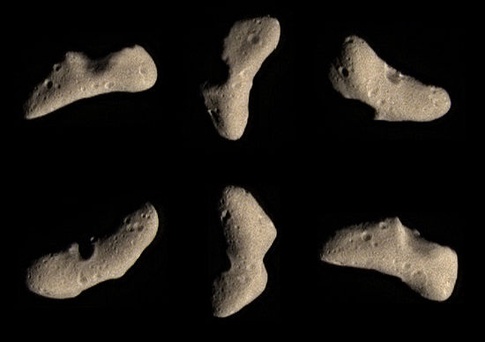
It is a bigger even than the dinosaurs meteorite - and it has 50% chance of hitting Earth in the next 100 million to billion years. But it's not a problem for us right now, it can only hit us if its orbit changes quite a bit first.
A Jupiter family comet, comes in to the inner solar system rarely, so the chance is small of it hitting Earth. We will soon have all of those mapped out.
So - likely to be lots of quite distant flybys in that case before it comes near to Earth.
Even for a Jupiter family short period comet, or a very large NEO, you probably have several flybys before it hits, because the Earth is an absolutely tiny target.
These are probabilities, can't say it is a certainty, but very likely.
Then in that situation, for each flyby before it actually hits, it has to fly past Earth through a particular "keyhole" region close to Earth. If you can get it to miss any of those keyholes, then it won't hit Earth.
So - when they talk about asteroid deflection strategies, normally is based on that assumption. They assume we have several decades of advance warning and many flybys first, or at least one flyby before it hits.
In that case you just need to change its delta v by maybe a fraction of a meter per second, a long time before the flyby so it misses the keyhole, so then misses Earth next time around (or several flybys into the future).
So then you can use quite gentle methods. Ideas include a gravity tractor, or nudging it, kinetic impact, lots of ideas.
DEFLECTING ASTEROIDS
White paint
First, one of the gentlest ways to do it is to just paint an asteroid white. If you are curious to find out how this can deflect it, here is a short video of professor Dave Hyland talking about the idea:
And article
Asteroids No Match For Paint Gun, Says Prof | Texas A&M Today
(or How to Deflect Killer Asteroids With Spray Paint | WIRED)
Its due to the Yarkovsky effect. When the sun heats up a rotating object, then the rotation carries it around some distance before the thermal photons are emitted as heat. The amount of the effect depends on how rapidly the object rotates, but also on how light or dark it is Since most asteroids are very dark, the obvious way to change the amount of this effect is to paint it white. So long as you discover it long in advance, then this may be enough to shift its orbit to miss the Earth (orbital predictions have to take account of the Yarkovsky effect).
Kinetic impact
Amongst the most favoured approaches are, direct kinetic (non nuclear) impact (obvious thing to do really), just hit it with something,
In the planetary defense conference early this year (2015), delegates practiced a scenario with a hypothetical incoming 365 meter meteorite, how it would play out, with kinetic interceptor spacecraft.
The US-ESA Asteroid Impact and Defection Mission AIDA is a concept study at present, but if it goes ahead, will send two small spacecraft to an asteroid with a moon (many asteroids have moons). One of them will impact the moon, the other will monitor what is happening close up, and it will also be monitored from Earth. The idea is to get some experience with deflection and find out for sure how big an effect it is. That's where the idea of targeting a binary asteroid is so clever. Though the amount of the effect is tiny in this case, just a small impact should make an easily detectable difference in the motion of the satellite.
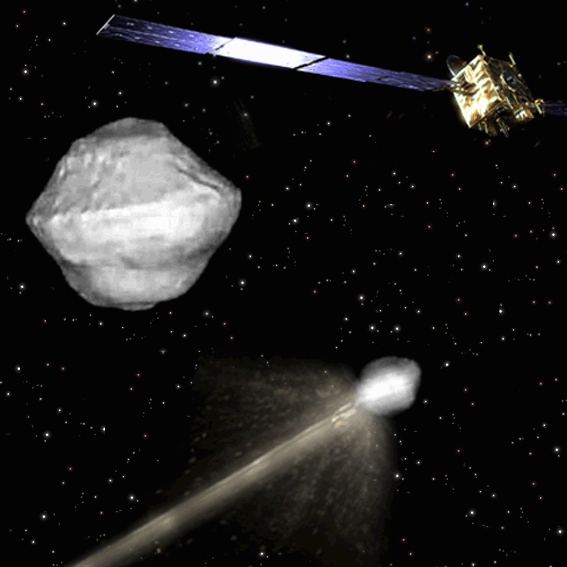
AIDA mission concept, artist's impression.
For details of AIDA, see "Asteroid deflection mission seeks smashing ideas".
Gravity tractor
Another approach is the gravity tractor. Basically you send quite a small spacecraft to sit next to the asteroid you want to move. Of course gravity pulls them together. But it thrusts against that gravity pull, so keeping them apart. You have to be careful that its exhaust doesn't impact on the asteroid you want to move. The gentle thrust of its gravity pull then moves the asteroid. With no need for it to land or make any contact with it.
Ion beam shepherd
There's also the opposite, a push approach, the Ion beam shepherd
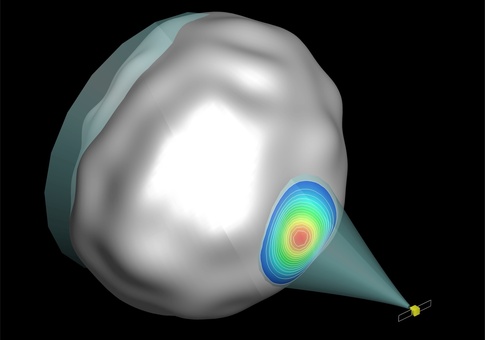
The effect would be tiny, even if you keep it running like this for years (as is the plan). But could be useful e.g. for an inactive comet or asteroid headed for Earth.
Normally anything heading our way will do many flybys of Earth before it hits it, as Earth is such a tiny target. So - suppose an inactive multi kilometer scale asteroid was heading for Earth, but missed it, and is going to hit Earth next time around a few decades later.
The path after it flies past Earth is very sensitive to tiny changes of position and velocity as it passes Earth.
So, a tiny force like this applied continuously at some point a year or two before its first close flyby of Earth could make a huge difference to its trajectory for the next flyby.
The point in using an ion thruster here is that you can load it with a small amount of fuel which is used up continuously but exhaust has a very high speed so not much fuel is needed for the same amount of thrust. But if the total amount of thrust is low, you could also use a chemical motor.
For details with an example of how it could be used for an asteroid Apophis due a close flyby of Earth in 2029, see A Gravitational Tractor for Towing Asteroids
Typically more would be needed, but in that example the total extra delta v is only a millionth of a meter per second for Apophis, applied a few years before the flyby. Apophis is around 325 meters in diameter, so quite large meteorites can be deflected by this method, given plenty of warning time (as will normally be the case for very large impactors, a decade or more).
Deflecting a small asteroid to hit a larger one
Another ingenious idea is to hit a smaller meteorite, to deflect it just enough so it hits the large one.
For this to work you need a small asteroid that is already doing close flybys of the large one, so that you just need to give it a gentle shove at the right time to deliver a massive hit on the larger asteroid. This then will greatly magnify the effect of your initial thrust.
Luckily, with so many NEOs, there is a decent chance of finding one with just the right trajectory to do the job. The chance of them hitting each other naturally is tiny, but with the option to give it a tiny thrust, it is not hard to steer it so it hits the large one.
As an example, they chose the 300 meter diameter Apophis. They showed how to find a smaller asteroid to deflect to hit it - in this case they found a small 10 meter diameter asteroid called 2004HE. It's mass is about 1,600 tons. They hit it with a spacecraft of mass 15 tons, with a relative speed of 1.55 km / second with respect to 2004HE, so shifting its trajectory just enough so that it hits Apophis. Then 2004H in turn hits the 26.9 million ton Apophis, causing a 0.39 meter per second change in its velocity. This would be easily enough to avoid a collision with Earth if applied far enough in advance of the collision.
See a small thrust on to deflect the path of a smaller meteorite to hit the larger one. A direct impact of the spacecraft with Apophis at the same 1.55 km / sec delta v would change its velocity by only 1500*15/26,900,000 = 0.000084 meters per second. So this indirect method can cause a relatively huge effect from a relatively tiny collision.
Other ideas
But a huge number of other ideas have been explored, some in a great deal of detail. For some of them see the wikipedia article: Asteroid impact avoidance
COULD WE DISINTEGRATE AN ASTEROID WITH NUCLEAR WEAPONS?
Until we know the positions of all the potential asteroids of 1 km or larger right out to the Kuiper belt, there is still a small chance of being hit by something with only a few months warning.
A medium sized 1 km asteroid could be disintegrated with a 1 gigaton hydrogen bomb - but we are not likely to get that ready in time with just a few months warning. But very unlikely to happen with such short notice.
The main potential problem is you might turn it into lots of smaller asteroids. If they are small enough, one or two meters, then they might all burn up in the atmosphere, but otherwise, you may be making the problem far worse. But with a big enough nuclear weapon it could work.
Russians and Americans experts together came up with a plan for a 1 gigaton nuclear weapon which could vaporize a 1 km asteroid and deflect a larger asteroid if you can do it less than ten years before the impact. A new use for nuclear weapons: hunting rogue asteroids
Here is Robert Weaver from Los Alamos talking about the idea.
This gives an idea of how it would work:
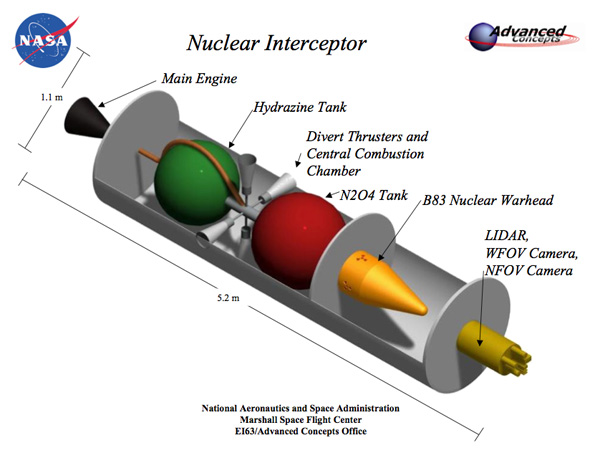
And this is an artist's impression.
For more about this, and some other ideas, see: Russia, U.S. Eye Team-up to Build Massive Nuke to Save Planet from an Asteroid
The largest, gigaton weapons, have never been tested, because even before the nuclear test ban treaties - a subsurface nuclear test of a one gigaton weapon it would cause a magnitude 8 earthquake, and in the air, even the 50 megaton Tsar Bomba is so big it got hard to find a large enough unpopulated area to test it.
The largest nuclear weapon anyone has suggested may be Teller's ten gigaton bomb, which he called a "backyard weapon" because you don't need to take it to the enemy - just detonate it in your backyard and it will destroy both you and your enemy :). So though you could in principle use very high yield weapons in space, one of the problems with using such high yield bombs is that we couldn't test them on the Earth.
That's from 2013.
This is a recent proposal, which is currently being studied, to have two impacts. The first is conventional, and excavates a crater. The second is a nuclear weapon and follows soon after, this blows the asteroid apart.

And this is a table summarizing the idea:
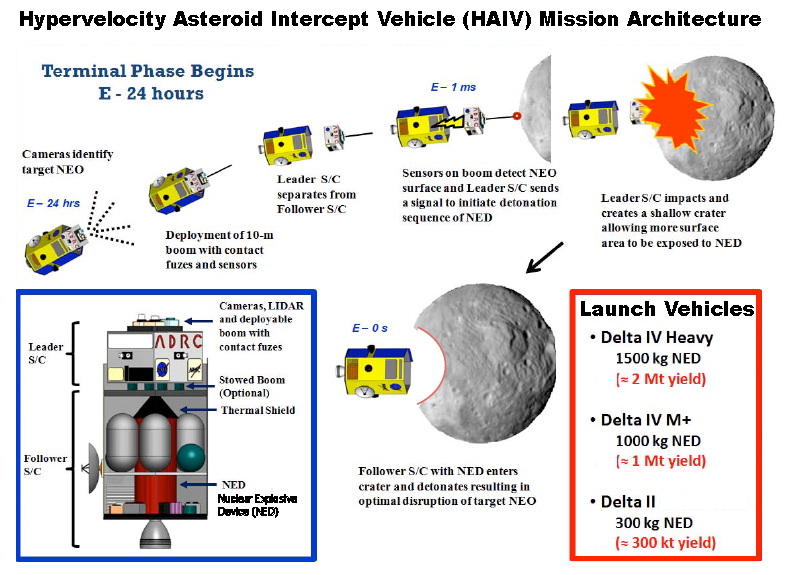
Hyper Velocity Asteroid Impact Vehicle (HAIV), reach within 100 days and disintegrate.
These recent ideas use smaller yield bombs, about 300 kiloton in that example.
These are just concept studies. Nobody is building these. As explained in the Russia, U.S. Eye Team-up to Build Massive Nuke to Save Planet from an Asteroid then they would run afoul of several major international treaties.
DISINTEGRATING A COMET OR METEORITE WITH SOLAR POWERED INFRARED LASERS
Philip Lubin (of UC Santa Barbara) has another approach. He talks about it here.
So his idea is to build a modular infrared phased laser array, powered entirely by solar power and focus the output on your NEO. You can use phasing to focus the infrared on the target.
The easiest targets would be comets as they evaporate at between 20 C and around 200 C. To evaporate stony or metallic meteorites you'd need thousands of degrees. You would target them during a close flyby of Earth, which they normally will do before they hit. With a smaller meteorite you can evaporate it completely (which is why I'm including it here in this section on destroying the meteorite). Since the array is modular, then as you build it larger, you can evaporate larger meteorites.
You can also use it to focus energy on part of the meteorite, creating a jet of evaporates that can propel the meteorite.
This image from his talk illustrates the idea.

On the subject of disintegrating asteroids, of course another approach, once we have space mining, if we do, is simply to mine it for its resources until nothing is left. An asteroid due to hit Earth several decades or millennia, in the future might be a good target to mine since it is destined to disintegrate anyway.
WHAT WOULD THE EFFECTS BE OF A ONE KILOMETER IMPACT?
- This crater typically is large enough to have mainly regional effects though with some global effects.
- If it landed in the sea, it would create a devastating tsunami, and mainly affect coastal communities.
- If it landed on the land, it would create a crater about 24 km in diameter. And blast radius, with cities destroyed, trees knocked over, 500 km / hour winds, up to 300 km. Kinetic energy 0.1 megatons.
- Regionally you get hurricanes, tsunami and earthquakes.
- Also, you get regional freezing for weeks from all the dust sent into the atmosphere.
- Global effects on a moderate level for weeks with dark skies and cooling.
- Acid rain regionally for months.
- Partial destruction of the ozone layer which lasts for years.
See Environmental Damage from Asteroid and Comet Impacts
For the effects of larger meteorites, see Environmental Damage from Asteroid and Comet Impacts. Also Solar System Fluff.
From 1 to 10 km then they are large enough to be devastating world wide and the larger ones cause mass extinctions. But, as we saw, not immediately extinction causing for humans, with our technology. Many creatures such as turtles survived the dinosaur extinctions, and we could do so also with technology.
WHAT COULD WE DO IF WE FIND A ONE KILOMETER OR LARGER METEORITE HEADED OUR WAY RIGHT NOW - THE ONE IN A TEN MILLION CHANCE?
We can try to build that rocket and bomb if we think it has any chance of being completed in time, you'd ask the experts. But it may be rather too short a period to get it designed, completed and launched, even with all our efforts put into it.
I think evacuating the impact zone would be the best thing to do right now, an.
So, we may seem vulnerable. But remember this is a very unlikely probability. 99.99999% chance that nothing of this sort happens in the next twenty years.
Then, within ten or twenty years we should know our solar system so thoroughly that the chance of this happening is almost zero.
If you've got enough budget available to actually build the capability to deflect or disintegrate a one kilometer diameter meteorite, you could spend your budget more productively by investing in the project to map out all the Near Earth Asteroids sooner. This would also let you map out all the smaller ones that are more likely to hit us more quickly too.
Once we've got them all or nearly all mapped out, then we will be able to detect 1 km asteroids decades in advance, and so will be able to deflect them easily, so more or less get rid of the chance of this happening at far less cost and with less risky and gentler way of dealing with the issue.
That's why the main need for funding, at the moment, is for detection of the asteroids. Your dollar will go a lot further that way. With almost unlimited funding, of course, we could do both.
CONCLUSION
There is nothing currently in the list of Current Impact Risks that has any probability at all of hitting Earth in the next year. None at all. Nothing even big enough to be hazardous to a city or cause a tsunami.
We will get many smaller impacts up to say ten meters or so - we get those all the time. They usually burn up in the atmosphere causing a spectacular but harmless fireball, occasionally some remnant makes it to the ground.
There is a chance of larger impacts up to hundreds of meters, and a tiny chance of larger impacts than that because its work in progress. It will take a while before they have them all mapped out. The plan is to have nearly all mapped out by the 2020s down to a few hundred meters.
A world ending impact - big enough to create the Hellas basin on Mars or the Lunar Mares is not going to happen.
Nothing that big has hit us for billions of years, so the probability is about zero. We can tell this from the impact history of the inner solar system on the Moon and Mars where we can see it all clearly laid out plain to view. This is probably because Jupiter disrupts any large incoming objects from the outer solar system so that they break apart, or hit Jupiter or do close passages of the sun and break up there or hit the sun. And while we are not protected in the same way from the larger inner solar system objects like Ceres, Vesta etc, in the asteroid belt, or from Mercury, they are all now in stable orbits for at least a few hundred million years.
For dinosaur extinction scale impacts - i.e. that many humans could survive because of our technology but dinosaurs couldn't - chances are minute of that happening in the near future, say before 2200.
Impacts as big as that happen every few million years. So, the best guess, at this stage before they complete the survey is that we probably have to wait at least a few million years before we have an impact as big as that.
With thousands, or millions of years to prepare for the impact, we may be able to divert it quite easily. Or we may just mine it until there is nothing left. Objects due to hit Earth anyway in the next few thousand years seem a good choice to mine for use in space or on Earth.
Even with a few decades of warning, we can divert them. Or if worst comes to the worst, we prepare e.g. building fireproof shelters etc to protect us, or identifying areas of the world that are safe to migrate to until the impact is over.
The dinosaurs didn't have submarines or boats or the ability to build shelters or use fire proof materials or, if it comes to it, oxygen breathers to last out a firestorm.
Many creatures did survive the big Chicxulub crater impact, including mammals probably by burrowing underground, and fish, and birds - perhaps by flying out to sea. With our submarines and boats and ability to travel to anywhere in the world - even if you have to move the entire population of the world out to sea, or to Antarctica to survive it - we could do that, especially given a few centuries to prepare. We could also build up food supplies to last out the years of "nuclear winter" after the impact itself.
But given a long enough lead time, we can hope to divert it, with many ways this could be done.
SOME LINKS
Entertaining TED talk about asteroid impacts and what we can do
See How to defend Earth from asteroids
by Phil Platt (of Bad Astronomy blog fame)
One of several blog posts about one of the many meteorite scare stories (we get them every year or so, and sometimes they are published by large distribution newspapers that should know better) by Phil Platts - there's a nice video debate with experts about asteroid impacts at the end
See also
Sizing Up the Threat from Near-Earth Objects (NEOs)
Entertaining TED talk about asteroid impacts and what we can do
How to defend Earth from asteroids
by Phil Platt (of Bad Astronomy blog fame)
One of several blog posts about one of the many meteorite scare stories (we get them every year or so, and sometimes they are published by large distribution newspapers that should know better) by Phil Platts - there's a nice video debate with experts about asteroid impacts at the end
Reports of an Asteroid Impact in 2106 Are Greatly Exaggerated
Also please see the Quora Asteroid Scares topic. Which is also a good place to look if you are concerned about any new asteroid scare that hits the headlines as there are many knowledgeable people there to answer your questions.
ORIGINAL VERSIONS
While writing this, I used two science20 articles I wrote:
- Is It True That An Asteroid Will Strike Earth On [Insert Date Here]? - Truth Behind Asteroid Scare Stories
- Asteroid Day Today, 30th June - Let's Find These Rocks And Deflect Them
Also material from my answers to numerous quora questions, including:
- Asteroid Scares: What is the chance of Asteroid 2012 TT5 hitting earth this September 24, 2015? Are we in danger?
- If a 1km sized rock was to, for certain, hit Earth in 6 months, what could we do about it?
- What kinds of technologies are currently used to deflect asteroids?
- What are the odds of a bigtime asteroid hitting the Earth a la Armageddon and Deep Impact?
- If a 1km sized rock was to, for certain, hit Earth in 6 months, what could we do about it?
- How do I go about ignoring the end of the world predictions and live my life to the fullest?
- Is the act of drilling into an Earth-bound asteroid to blow it up with a nuclear weapon (as seen in Armageddon) technically feasible? If so, how much would it cost and how many nukes would you need?
DO COMMENT
Please do say in the comments if you spot any errors in this however small, including typos, or if you have any questions or thoughts about it. Thanks!
HOW TO GET THIS ARTICLE AS A KINDLE EBOOK
You can get it here:
Giant Asteroid Is Headed Your Way? : How We Can Detect and Deflect Them (Amazon)






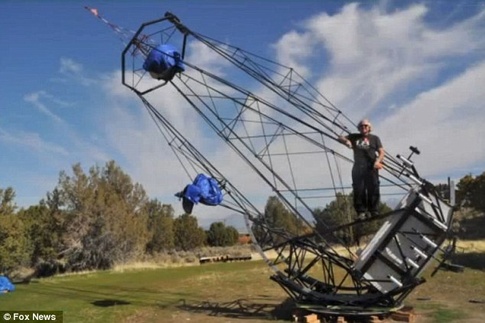


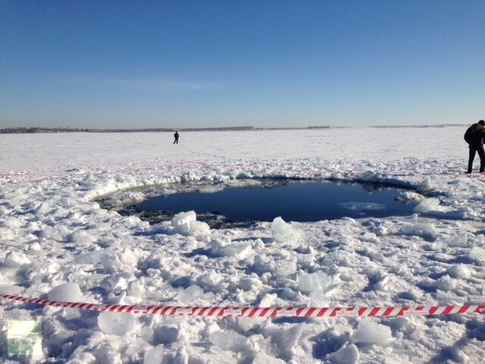
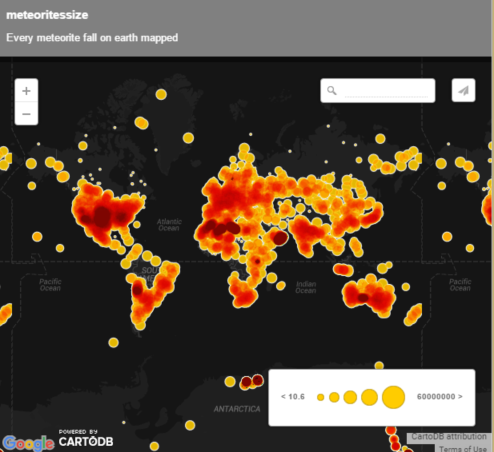
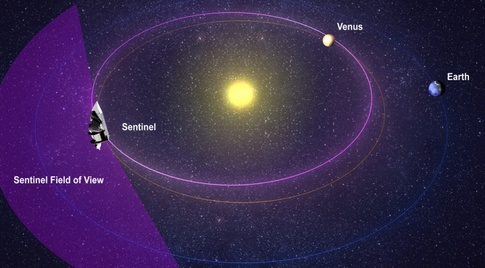

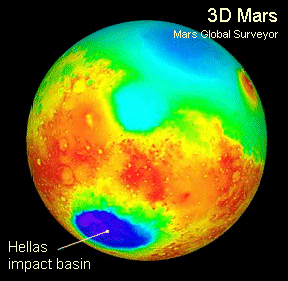

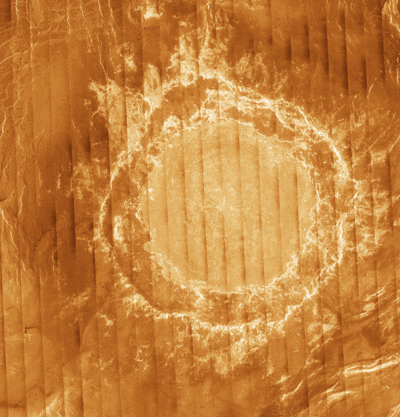

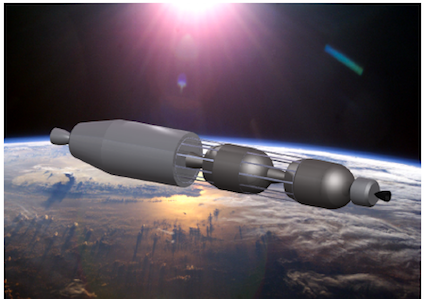



Comments